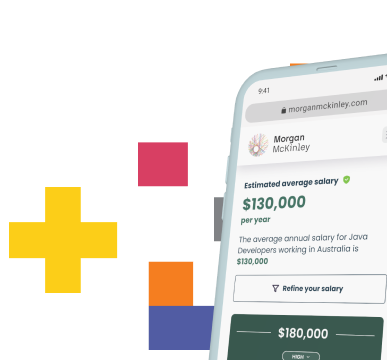Global Hiring Realities: How Are Companies Combating The Great Resignation?

Recent data suggests that a greater number of workers are quitting their jobs now than has been seen for the last 20 years. It seems that the pandemic has triggered professionals to rethink the direction of their careers and has inspired them to move roles in their masses.
For some organisations, this ‘Great Resignation’ is an unparalleled threat. For others, it is a golden opportunity to secure accomplished talent that will add value for years to come.
To gain an understanding of exactly how organisations are trying to combat this challenge, we surveyed key hiring decision makers from 62 companies across a range of industries. We also gathered responses from 4,134 professionals, who are on the other side of the issue, to find out whether companies’ attempts to attract, hire, retain and engage them are working.
Here’s what we found out from the hiring organisations’ perspectives…
Prefer to read in PDF instead?
- Prefer to read in PDF?download
Key findings:
- 48% of employers say ‘salary/compensation package’ is the primary reason for departure given by staff when they leave their organisation
- 65% of employers have lost their preferred candidate due to a lengthy hiring process
- 90% of organisations now offer more flexible working arrangements than they did pre-pandemic
1. Attracting the right talent
‘Offering increased salaries/compensation packages’ was the most frequently selected talent attraction strategy that employers have been using in the current competitive hiring market. Closely behind was ‘engaging (specialist) recruitment agencies’ and then ‘improving our Employee Value Proposition’.
“A candidate driven market drives salary inflation and gives greater bargaining power to astute job seekers. This in the long term will become unsustainable and could drive companies to look at lower cost locations with a greater talent supply. The world has already proved working from anywhere is now possible.”
Gurj Sandhu | Managing Director, Morgan McKinley Singapore
2. What has been the most effective strategy?
Organisations have seen the most success (by some distance) in securing the talent they want by increasing salaries/compensation. Keeping up-to-date with the industry average salaries for your team members - by using salary checking tools - ensures you don’t fall behind competitors on what you are offering in terms of remuneration.
The next two most effective methods were improved Employee Value Proposition (EVP) and reduced time to hire.
Many candidates actively looking for a new role have been engaged in multiple processes simultaneously. Those companies that delay making a decision are at risk of losing their preferred choice to another organisation that moves through their hiring process quicker.
3. Common reasons employees leave organisations
Money leads the way once again; salary/compensation package was the most common reason given to employers by their employees for why they are leaving their jobs. Second and third on the list were lack of career progression opportunities and relationship with manager, respectively.
The latter two show a bit of a mismatch between employers and their workforce: Organisations have been channelling attention into their wider EVP and engagement strategies, but professionals seem to care most about their own personal situation - how they can advance their career and the people they have to work closely with on a daily basis.
For those employers who are losing team members to other companies that are willing to pay more, perhaps keeping abreast of market rates by using salary guides and offering more regular pay reviews would stem the flow.
4. Length of hiring processes
1-2 months was the most frequent (44% of respondents) average length of hiring process outlined by key hiring decision makers, followed by 2-4 weeks (29%), other (16%) and 1-2 weeks (11%). Of those who selected other, from 4 to 6 months was the most common duration.
When you consider that shorter hiring processes was the third most successful strategy for hiring talent, those organisations who continue with hiring processes that are unnecessarily lengthy are less likely to secure the talent they need.
“Get organised and have your interview process nailed down. Aim to have it done in 2-3 weeks from date of application. This will get you top talent. There is a lot to be said about a company if their interview process is messy and long.”
Ian Kinsella | Managing Director, Morgan McKinley Canada
This is confirmed by the findings of our question ‘Have you ever lost your preferred candidate due to a lengthy hiring process?’ - a 65% majority responded yes.
5. The state of flexible working on offer
With the hybrid work approach now firmly established in most industries across organisations globally, it is not surprising that the overwhelming majority of employer respondents (81%) stated that their organisation offers flexible working in some capacity.
In reaction to the ‘forced’ work from home situation that so many of us have experienced over the last two years, 90% of organisations that responded to our survey have changed their policy on flexible working compared to pre-pandemic to offer more flexible working.
Looking deeper into the type of flexible work now on offer:
- 27% allow employees to work fully remotely
- 26% have 2-3 mandatory days in the office
- 16% have 1-2 mandatory days in the office
The remaining 31% responded ‘Other’ and outlined an enormous range of flexible working options, including: “Employee preference”, “2-4 days from home monthly”, “In the office once per quarter” and “Fixed days in the office only by project need”.
A number of respondents mentioned how their hybrid working policy was still a work-in-progress. Taking the time to make the right long-term call is a better approach than implementing something for the interim and then backtracking further down the line.
6. Retention of talent
In an attempt to combat the ‘Great Resignation’ which is being seen in many countries, organisations have looked at their employee retention strategies and realigned them to be more relevant to the expectations of professionals in the current workplace climate.
When asked what their organisation is doing to hold on to talent, the most common response was ‘offering professional development and upskilling opportunities’, followed by ‘offering more flexible and remote work options’, and ‘investing in technologies to make work easier for our employees’.
Some organisations are thinking outside of the box when it comes to retention, hoping that their innovative differentiators will prevent employees from wanting to move. Some things that were highlighted include: “Implementing effective employee recognition techniques that work well with remote teams”, “Offering retention bonuses”, “Offering a wellness package comprising coaching, mental health care, medical cover, and financial wellness”, and “Increased communication on corporate strategy and programmes”.
“Innovation here is about re-thinking the office culture, being radical, being brave to implement real changes, driven by the employees for the employees.”
David Leithead | COO, Morgan McKinley UK
Worryingly, as revealed in our findings from the 4,134 professionals, the majority of employees don’t seem to be aware of what their employer is doing to try and retain them. Whatever you are doing around retention, it’s vital that you are voicing it back to your workforce.
Adjusting your processes to align with job seeker expectations
Whilst every country will have its own more local trends, these findings give a general global picture of how companies are attempting to combat the Great Resignation. Not only to engage and retain their existing workforce, but also how they are going about hiring the talented professionals that are looking for a new job.
For organisations, the one key takeaway from this research should be around the need to adapt. The working world has changed significantly in the last two years, and the attitudes of professionals have shifted accordingly.
You will have to be more accommodating in terms of flexible working, job seekers will push you (potentially to the limits of your budget) when negotiating their salary and if you can shorten your hiring process, then you stand more chance of success. It may take some time to get right, but these are the things you will have to accept if you want to hire and hold onto the best talent today.














